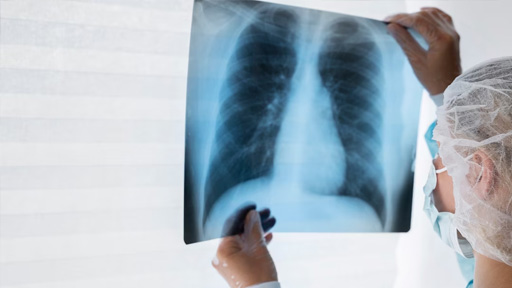Understanding Prolapse
Prolapse occurs when the muscles and tissues supporting the pelvic organs weaken, causing organs such as the uterus, bladder, or rectum to shift from their normal position. There are several types of prolapse, including uterine prolapse, bladder prolapse (cystocele), rectal prolapse (rectocele), and vaginal vault prolapse. Each type has distinct symptoms, but common signs include a feeling of heaviness or pressure in the pelvic area, urinary or bowel issues, and discomfort during physical activity. Risk factors include aging, pregnancy, childbirth, chronic constipation, obesity, and repeated heavy lifting. Prolapse can develop gradually and may sometimes go unnoticed until symptoms become disruptive. Understanding the condition is the first step toward effective prolapse therapy. Early recognition allows women to implement therapies that strengthen pelvic support and improve overall well-being. Proper diagnosis and awareness of specific prolapse types are critical to targeting therapy effectively.
How Prolapse Therapy Works
Prolapse therapy is designed to strengthen the pelvic muscles, improve organ support, and reduce symptoms without immediately resorting to surgery. Non-surgical approaches form the cornerstone of therapy, which typically involves physical therapy, targeted exercises, and lifestyle adjustments. Medical devices such as pessaries may also be used to provide support to prolapsed organs. A personalized treatment plan is critical, as the type and severity of prolapse differ from one individual to another. Therapy focuses on improving quality of life by reducing discomfort and preventing further progression of the condition. Regular monitoring ensures that adjustments can be made to optimize results. Combining therapeutic strategies with professional guidance can provide long-lasting relief and empower women to regain confidence in daily activities.
Physical Therapy for Prolapse
Pelvic floor muscle training is one of the most effective components of prolapse therapy. Exercises, often called Kegels, target the muscles that support the bladder, uterus, and rectum. Correct technique is crucial for these exercises to be effective, and guidance from a trained physical therapist can ensure proper form. Biofeedback therapy may also be recommended, allowing patients to visualize muscle activity and improve their control. Physical therapy often includes functional training, teaching women how to use their pelvic muscles during everyday activities like lifting, bending, or standing. Consistency is essential, as regular practice over weeks or months can significantly improve symptoms. Combining targeted exercises with lifestyle adjustments enhances overall pelvic stability. Over time, women may notice reduced pressure, improved bladder control, and less discomfort during exercise or sexual activity.
Lifestyle Adjustments to Support Therapy
Lifestyle changes play a key role in maximizing the effectiveness of prolapse therapy. Maintaining a healthy weight reduces strain on the pelvic floor and supports the body’s natural structure. Avoiding heavy lifting and high-impact activities can prevent worsening of prolapse symptoms. Nutrition also contributes to pelvic health, with a diet rich in fiber helping to reduce constipation, which can exacerbate prolapse. Staying hydrated and managing chronic coughs are additional measures to protect pelvic support. Women are encouraged to adopt regular, low-impact exercises like walking or swimming to maintain overall strength without overloading the pelvic region. Integrating these adjustments with daily routines ensures that therapy works more effectively. Small, consistent changes can make a major difference in symptom management and long-term recovery.
Medical Treatments and Interventions
While non-surgical prolapse therapy is highly effective for many women, some cases require additional medical intervention. Minimally invasive surgical options may be recommended when symptoms are severe or persistent despite conservative therapy. Procedures can include repair of the prolapsed organ, reinforcement of weakened tissues, or use of supportive mesh in select cases. Post-treatment rehabilitation is essential to restore strength and prevent recurrence. Physical therapy continues to play a role after surgery, helping patients regain pelvic function. Regular follow-up care ensures that the repair remains stable and that any emerging issues are addressed promptly. Combining medical treatment with ongoing therapy provides a comprehensive approach to long-term pelvic health and functional improvement.
Emotional and Psychological Support
Prolapse can impact a woman’s emotional well-being, self-esteem, and confidence, making psychological support an essential part of therapy. Many women experience embarrassment, anxiety, or frustration related to their symptoms. Support groups, both in-person and online, provide a safe environment for sharing experiences and receiving encouragement. Counseling or therapy sessions may help women cope with the emotional challenges of living with prolapse. Open communication with healthcare providers about fears and concerns is critical for holistic care. Self-care routines, including relaxation techniques and mindfulness practices, can enhance emotional resilience. Feeling informed and supported often translates into better adherence to therapy and overall recovery.
Monitoring Progress and Preventing Recurrence
Tracking improvements and setbacks is crucial for successful prolapse therapy. Signs that therapy is effective include reduced pelvic pressure, better bladder or bowel control, and improved muscle strength. Keeping a symptom diary can help identify patterns and triggers that worsen prolapse. Long-term pelvic health requires ongoing exercises and mindful lifestyle habits even after symptoms improve. Women should attend regular medical check-ups to detect early changes and prevent recurrence. Adjustments to therapy, nutrition, or physical activity may be necessary over time. Maintaining awareness of pelvic health ensures that gains from therapy are preserved for years to come.
Frequently Asked Questions (FAQ)
Can prolapse therapy completely reverse the condition?
Prolapse therapy may significantly improve symptoms and strengthen pelvic support, but full reversal depends on severity and individual factors. Early intervention tends to produce better outcomes.
How long does it take to see results from therapy?
Most women notice improvements within a few weeks to months of consistent therapy, though ongoing exercises are necessary for lasting effects.
Are prolapse exercises safe for all women?
Pelvic floor exercises are generally safe, but women with severe prolapse or certain medical conditions should consult a healthcare provider before starting.
What lifestyle changes help the most?
Maintaining a healthy weight, avoiding heavy lifting, managing constipation, and staying active with low-impact exercises are key supportive measures.
How to choose the right medical professional for prolapse therapy?
Look for physical therapists, gynecologists, or urogynecologists experienced in pelvic floor rehabilitation. Certifications and patient reviews can help guide decisions.






